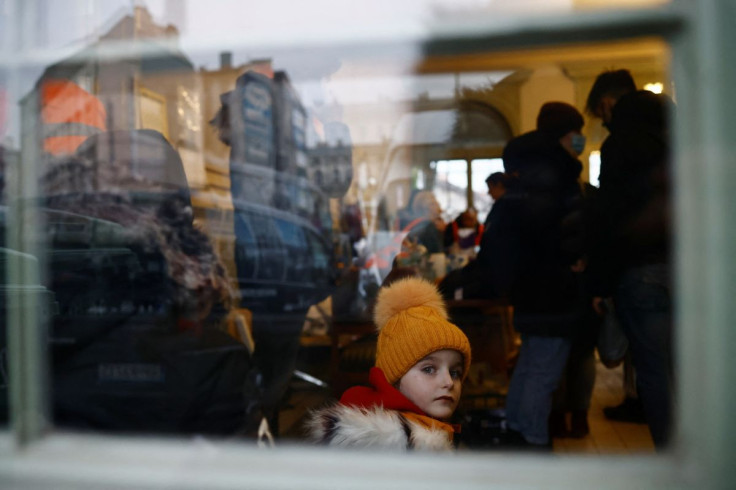Ukrainians Stream Over The Borders As Evacuations From Besieged Cities Begin

Thousands more people fleeing fierce fighting in Ukraine streamed into central and eastern Europe on Tuesday amid renewed efforts to create safe evacuation routes from cities being bombarded by Russian forces.
Two million people - mostly women and children - have now fled Ukraine since the beginning of the Russian invasion on Feb. 24, the U.N. refugee agency UNHCR said.
With fighting around many of Ukraine's main cities intensifying under Russian missile and artillery attacks, authorities across eastern Europe are struggling to accommodate the swelling wave of refugees.
"As far as the accommodation is concerned, there are indeed times when it gets very crowded," said Witold Wolczyk, from the mayor's office of Przemysl, a town near Poland's busiest border crossing that has become a transit hub for Ukrainian refugees.
"Last night we managed to get 30 buses out of Przemysl, they went in different directions ... We are trying to do our best to make this traffic flow smoothly," he said.
At the Medyka border crossing, east of Przemysl, where refugees have been arriving by foot and by car, the line of waiting vehicles stretched about 6 kilometres (3.7 miles) with waiting times on the Ukrainian side of the border running at 20 hours, two women told Reuters after they made it across.
SECOND WAVE
Nearly two weeks into the invasion the head of the UNCR warned that the initial burst of refugees was likely to be followed by a second wave of more vulnerable people, without resources or connections.
"That will be a more complex situation to manage for European countries going forward, and there will need to be even more solidarity by everybody in Europe and beyond," Filippo Grandi told a news conference in Oslo.
European Union officials have said the bloc could see the arrival of some 5 million people. So far, most of those fleeing remain in the countries bordering Ukraine, led by Poland, which has taken in well over a million so far.
After several aborted efforts to create "humanitarian corridors" for civilians fleeing some of the fiercest fighting, Ukrainian officials said evacuations had begun from the besieged city of Sumy, as well as from the town of Irpin on the outskirts of Kyiv.
Outrage at Russia's onslaught and a long history of fraught relations with Moscow has seen the refugees largely met with an outpouring of sympathy and aid efforts across eastern and central Europe.
Russia calls its actions in Ukraine - which have triggered the worst refugee crisis in Europe since World War Two - a "special military operation".
Nearly 300,000 people have crossed into Romania since the war began, roughly half of whom have entered from non-EU member Moldova, while more than 140,000 had reached Slovakia and almost 200,000 crossed into Hungary, officials say.
Further from Ukraine, authorities said more than 100,000 people had gone to the Czech Republic, where Prague's refugee assistance centre reopened after a closure due to over-capacity on Monday, while more than 43,000 had entered Bulgaria.
As of Monday, the UN had confirmed the deaths of 406 civilians in Ukraine, but it said the real figure was likely to be much higher, while hundreds of thousands of people had been cut off from aid due to the fighting.
© Copyright Thomson Reuters 2024. All rights reserved.





















